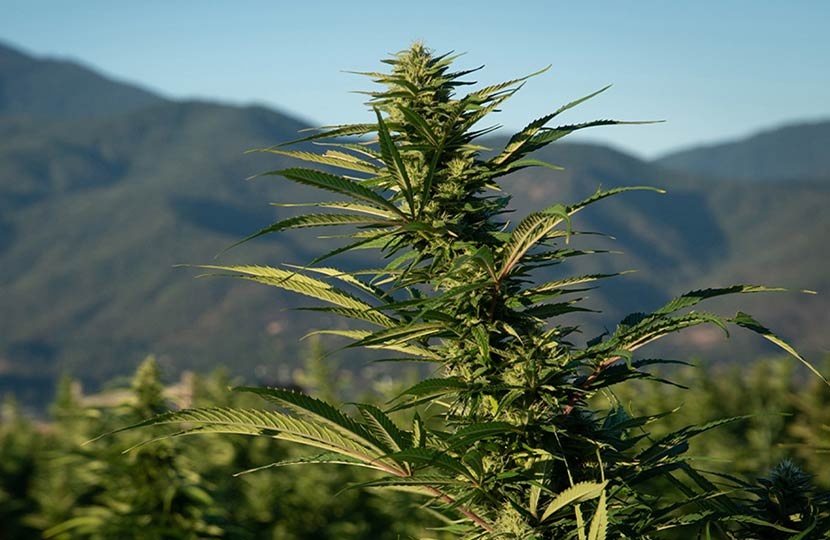You’ve become quite familiar with a lot of different types and strains of cannabis. Perhaps you’re even a legacy user who has known what’s up for a while now. But even with your in-depth knowledge, you recently came across the term “landrace strain” and are wondering what the heck it is. Maybe a quick Google search led you here. Fortunately, Google served you well, because we love digging into unfamiliar terms. With that said, we’re pumped and primed to teach you about landrace strains!
The Earliest Cannabis Strains
First and foremost, landrace is the Danish word for origin. With this in mind, it makes sense that this term describes the earliest strains we know. These are the strains that existed before crossbreeding brought us so many hybrids, and we have them to thank for the wide variety available to us now. Landrace strains contain the purest genetic makeup and are only grown in their native regions. They can take longer to cultivate and require more attention than modern hybrids, making them less popular among growers. Not only that, but landrace crops do not propagate as abundantly. Even so, it’s important for cultivators to continue growing these historic strains to preserve their legacy.
Many consumers will refer to a strain as indica or sativa, but because so many products are made from hybrids, these terms don’t accurately describe what’s in the box. When it comes to the landrace strain, however, such identifiers become more relevant.
The original sativa plants were native to regions around the equator, which have lengthy summers, little water, and are hotter overall. They were the first strains classified by botanists, with the term “sativa” translating to “cultivated.” The original indica plants were found in the mountains of Central Asia where temperatures are typically much lower. You’ll often notice “Kush” in the name of these strains because they originated in the Hindu Kush mountains. In fact, the very first landrace strains are known to have grown in this region, which stretches across Pakistan and Afghanistan. Indica was largely uncommon in the west until the ’60s hippie generation in North America started taking influence from the culture of Southeast Asia.
You’ve heard of indica and sativa, but there’s one other landrace strain you may not know, and that’s cannabis ruderalis. This type of cannabis contains a very small amount of THC and is known to grow in Siberia and the Himalayans, which aren’t the most welcoming environments for plants. Because of these harsh growing conditions, ruderalis strains have become quite resilient and can easily adapt. They don’t require much light to thrive and are thus sought after for breeding purposes and industrial hemp products. There are fewer ruderalis strains than indica or sativa, and they aren’t typically grown purely for consumption.
As humans discovered what cannabis could do, people from all over wanted to grow some on their home turf. So from there, the plant was brought to different regions all over the world, where it was carefully cultivated to thrive in different climates.
Environmental conditions played a major role in how cannabis plants would grow, thus affecting the composition of chemical compounds like terpenes and cannabinoids. This is why sativa and indica strains in their purest forms have been known to cause completely different effects. But because cannabis has evolved and changed so much through crossbreeding, those distinctions aren’t quite as significant as they once were.
Can You Still Find Landrace Strains?
If you’re shopping for cannabis products, most of what you’ll see on the shelf will be different forms of hybrids. Such a practice allows cultivators to grow strains for very specific purposes, with modifications including precise THC to CBD ratios, particular flavors, particular smells, desired terpene content, and other important characteristics.
Even so, landrace strains are still on the market, though they have become quite rare to the point where several of them are considered endangered. Typically, their native regions are denoted in their names, which may help you spot these rare strains. If you’re interested in a sativa landrace strain, you may want to try Acapulco Gold, Durban Poison, Colombian Gold, or Chocolate Thai. Some good indica landrace strains include Afghani, Lashkar Gah, and Hindu Kush. While it is still possible to enjoy landrace strains, it’s important to keep in mind that because of natural evolution and changing conditions, they won’t be completely identical to their ancestors.
Should you decide to experiment with landrace strains, don’t go in expecting a life-changing experience; they won’t give you a stronger head buzz, nor will they more effectively bring you relief from side effects/symptoms. If you’re looking to get something specific from your cannabis consumption, hybrids are actually more effective for targeted use. Still, some may be curious to see how they hit, as they represent the purest form of cannabis.
Because they are much rarer than modern hybrids, landrace strains will likely come at a higher price. Regardless, if you can find a product that doesn’t hurt you financially, it’s always worth trying. After all, it could suit you well, not to mention it will offer you a chance to try a kind of cannabis that is arguably less genetically diluted than the majority of strains out there.
Resources:
https://wayofleaf.com/cannabis/101/landrace-cannabis-strain
https://honestmarijuana.com/landrace-strains/
https://herb.co/learn/what-are-landrace-strains/

